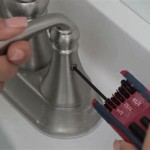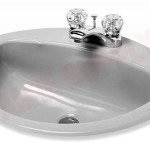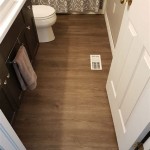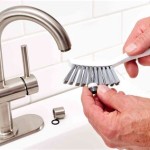How to Build a Bathroom Towel Cabinet
A bathroom towel cabinet serves as a functional and aesthetic addition to virtually any bathroom. It provides a designated storage space for towels, washcloths, and other bathroom essentials, helping to maintain a neat and organized environment. Constructing a custom towel cabinet offers the advantage of tailoring the dimensions, style, and finish to complement the existing decor and available space.
The project requires careful planning, precise measurements, and a basic understanding of woodworking techniques. This article outlines the steps involved in building a bathroom towel cabinet, offering guidance on materials, tools, and construction methods.
Planning and Design
The initial stage of building a bathroom towel cabinet involves meticulous planning and design. Deciding on the size, style, and layout is crucial. Begin by evaluating the available space in the bathroom and determining the maximum dimensions of the cabinet. Consider factors such as doorway clearances, plumbing fixtures, and existing furniture.
Next, consider the overall style of the bathroom and select a cabinet design that complements the aesthetic. Cabinets can range from simple, minimalist designs to more ornate, traditional styles. Browse online resources and home improvement magazines for inspiration. Sketching out a few different design ideas can help visualize the final product.
Once a design is finalized, create a detailed plan that includes precise measurements for all cabinet components. This plan should specify the dimensions of the cabinet frame, shelves, doors (if applicable), and any additional features such as drawers or decorative trim. A detailed plan will minimize errors during the construction process and ensure that all components fit together correctly.
Selecting the appropriate materials is also key. Common choices for bathroom cabinets include solid wood, plywood, MDF (Medium-Density Fiberboard), and particleboard. Solid wood offers durability and a classic look but can be more expensive. Plywood is a cost-effective alternative that provides good strength and stability. MDF is a smooth, paintable surface that is ideal for cabinets with intricate designs. Particleboard is the least expensive option but is less durable and moisture-resistant than other materials.
Consider the hardware to be used, such as hinges, knobs, and drawer pulls. Choose hardware that complements the style of the cabinet and is designed for bathroom use. Stainless steel or chrome hardware is resistant to corrosion and will maintain its appearance over time.
Materials and Tools
The following is a list of materials that are typically required for building a bathroom towel cabinet:
- Wood (Solid Wood, Plywood, MDF, or Particleboard): Quantity depends on the size and design of the cabinet.
- Wood Glue: For bonding wood components together.
- Screws: For securing cabinet components. Choose screws that are appropriate for the type of wood being used.
- Finishing Nails: For attaching trim and decorative elements.
- Wood Filler: For filling nail holes and imperfections.
- Sandpaper: For smoothing surfaces and preparing them for finishing. (Various grits)
- Primer: For sealing the wood and providing a base for paint.
- Paint or Stain: For finishing the cabinet. Choose a finish that is moisture-resistant and easy to clean.
- Polyurethane or Varnish: For providing a protective topcoat.
- Hinges: For attaching doors to the cabinet frame.
- Knobs or Pulls: For opening doors and drawers.
- Shelf Supports: For supporting shelves inside the cabinet.
The following is a list of tools that are typically required for building a bathroom towel cabinet:
- Measuring Tape: For taking accurate measurements.
- Pencil: For marking cut lines.
- Combination Square: For ensuring right angles.
- Circular Saw or Table Saw: For cutting wood to size.
- Miter Saw: For making angled cuts.
- Jigsaw: For cutting curved or irregular shapes.
- Drill: For drilling pilot holes and driving screws.
- Screwdriver: For tightening screws.
- Hammer: For driving nails.
- Sander: For smoothing surfaces.
- Clamps: For holding components together while the glue dries.
- Paintbrushes or Sprayer: For applying paint or stain.
- Safety Glasses: For protecting eyes from debris.
- Dust Mask: For protecting lungs from dust.
Construction Process
The construction process of a bathroom towel cabinet typically involves the following steps:
1. Cutting the Wood: Use the detailed plan to cut all wood components to the correct size and shape. Accuracy is crucial during this stage, as any errors will affect the final dimensions of the cabinet. Use a circular saw or table saw for straight cuts and a miter saw for angled cuts. A jigsaw can be used for cutting curved or irregular shapes.
2. Assembling the Cabinet Frame: The cabinet frame forms the main structure of the cabinet. Assemble the frame by joining the side panels, top panel, and bottom panel using wood glue and screws. Ensure that the frame is square and level. Use clamps to hold the components together while the glue dries.
3. Installing Shelves: Shelves provide storage space inside the cabinet. Determine the desired spacing between shelves and mark the locations for shelf supports on the inside of the cabinet frame. Install shelf supports using screws or shelf pins. Place the shelves on the supports.
4. Building and Installing Doors (if applicable): If the cabinet design includes doors, construct them from the chosen wood. Assemble the door frame using wood glue and screws. Cut a panel to fit inside the door frame. Attach the panel to the frame using glue and brad nails. Install hinges on the cabinet frame and the door. Attach the door to the frame.
5. Building and Installing Drawers (if applicable): If the cabinet design includes drawers, construct the drawer boxes. Assemble the drawer boxes using wood glue and screws. Install drawer slides on the inside of the cabinet frame and on the drawer boxes. Insert the drawer boxes into the cabinet.
6. Adding Trim and Decorative Elements: Add trim and decorative elements to enhance the appearance of the cabinet. Cut the trim pieces to size and attach them to the cabinet using finishing nails and wood glue. Fill any nail holes with wood filler.
7. Sanding and Finishing: Sand all surfaces of the cabinet to create a smooth finish. Start with a coarse grit sandpaper and gradually move to a finer grit. Wipe away any dust with a damp cloth. Apply a coat of primer to seal the wood. Allow the primer to dry completely. Apply two coats of paint or stain to the cabinet. Allow each coat to dry completely before applying the next. Apply a coat of polyurethane or varnish to protect the finish.
8. Installing Hardware: Install the knobs or pulls on the doors and drawers. Ensure that the hardware is securely attached.
Key Considerations for Durability and Longevity
Several factors contribute to the durability and longevity of a bathroom towel cabinet. Selecting appropriate materials is paramount. As previously mentioned, using moisture-resistant materials like solid wood or plywood treated with a water-resistant sealant is crucial for preventing warping, rot, and mold growth. Avoid particleboard in high-moisture areas.
Proper joinery techniques are another key element. Strong and stable joints will ensure that the cabinet can withstand the stresses of daily use. Use wood glue and screws to reinforce joints. Consider using more advanced joinery techniques such as dovetail joints or mortise and tenon joints for increased strength.
The chosen finish also plays a significant role in protecting the cabinet from moisture. A durable, water-resistant finish such as polyurethane or varnish will seal the wood and prevent water from penetrating the surface. Apply multiple coats of finish for added protection. Regularly clean and maintain the cabinet to prevent the build-up of moisture and mildew.
Ventilation is also critical. Insufficient ventilation can trap moisture inside the cabinet, leading to mold growth and damage. Ensure that the bathroom is well-ventilated by using a ventilation fan. Open the cabinet doors occasionally to allow air to circulate.
Finally, consider the placement of the cabinet. Avoid placing the cabinet directly in the path of water spray from the shower or sink. If possible, position the cabinet away from direct sunlight, which can cause the finish to fade over time.

32 Creative Diy Towel Storage Ideas Designs For Bathroom In 2024

32 Creative Diy Towel Storage Ideas Designs For Bathroom In 2024 Towels
:max_bytes(150000):strip_icc()/ohohdeco-223f4268630e4dd0bc2cad669e24c3a9.jpg?strip=all)
24 Diy Bathroom Storage Ideas

Amber Oliver Colorful Diy Crafts Life Bathroom Decor Bathrooms Remodel Design

Pin On Ohmeohmy Diy Projects Home Decor Organizing Garden Decorating And Design

45 Best Towel Storage Ideas And Designs For 2024

Diy Towel Holder Made With Wood Pallet And Wire Bathroom Paint Towels

Diy Wood And Leather Towel Shelf

How To Build A Bathroom Towel Cabinet

Build A Diy Towel Storage Featuring Designs By Studio C Free And Easy Project Furniture Plans Bathroom Wood Rack Towels
Related Posts







